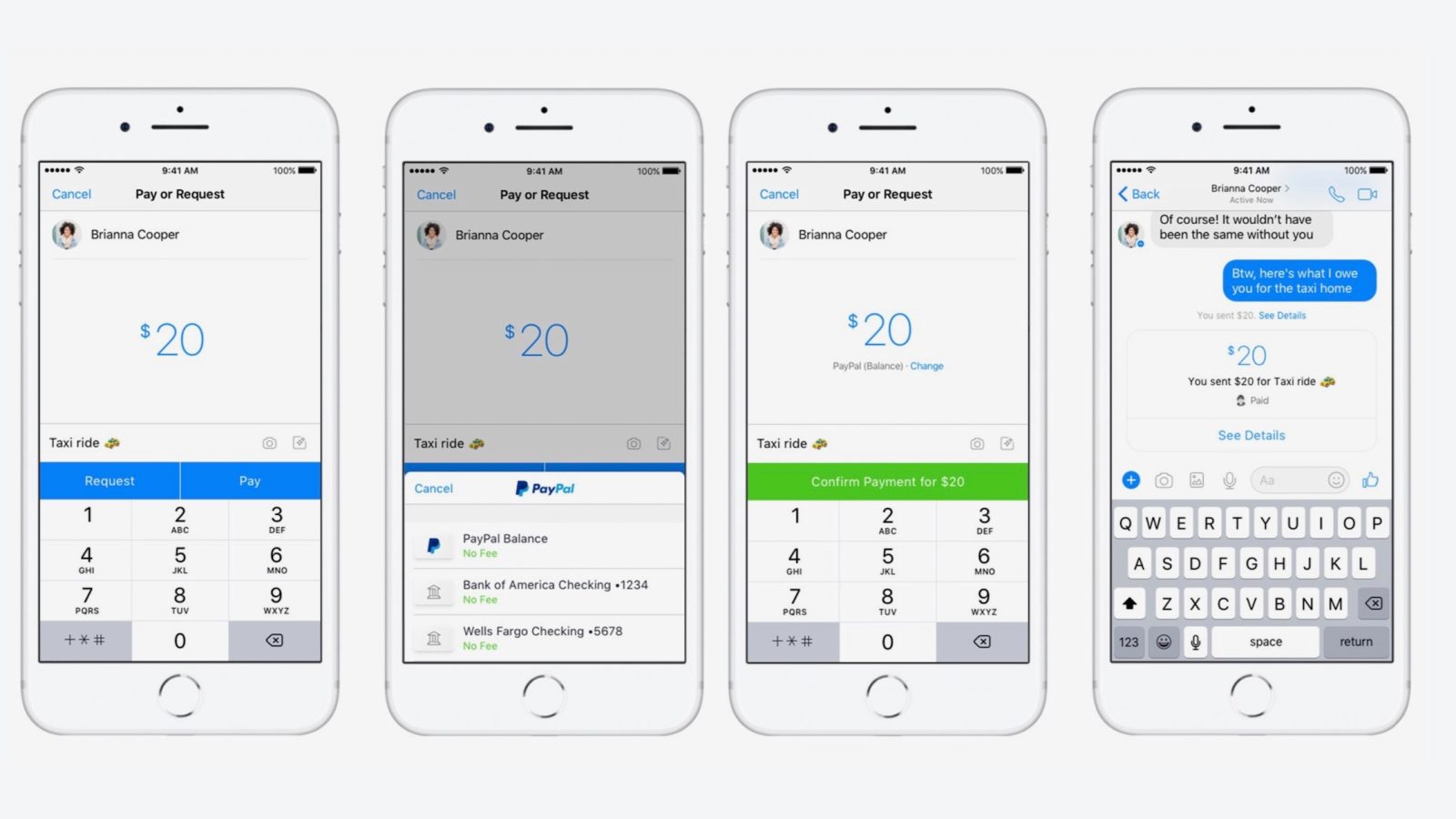With the announcement of IOS 11 and its new devices this year including the iPhone 8 and iPhone X, Apple also introduced using Apple Pay to pay friends right inside your text messaging app. Now, Facebook has introduced the same thing for their Messenger app using PayPal.
With apps like Square Cash and PayPal, it has always been pretty easy to split a tab, send your friends money, and even take payments as a small business. However, what are the dangers in this type of technology? There are a few, and some of them may be the very reason Apple delayed the release of this feature until early 2018.
Costly Mistakes
Part of the issue is that the “smart” part of the application is supposed to suggest or detect how much money you want to send to your friend from the content of your messages. However, the machine learning does not pick up on sarcasm, and so tests showed the potential for some costly mistakes, especially if the user was not paying close attention and quickly hit send.
This instant money capability seems like a great thing, and Messenger initially introduced the ability to pay friends inside their app in 2015. Users could use a debit or credit card, but now with the addition of PayPal, they have even more options.

However, adoption has not been widespread. In fact, few users know about the option at all, let alone use it. This fear of potentially costly mistakes is probably one of the many reasons.
Scams and Bots
The most pressing danger may be scams and bots. Humans tend to want to be trusting, especially of large companies that they buy products from or use their services. Scammers are pretty good at playing on that, and even create fake email addresses and social media profiles already to try to get people’s passwords and information.
They do this by purchasing domain names that are close to correct, creating email addresses within those domain names, and even creating phone numbers and fake websites to go with them. Often, they con individuals into buying and sending them gift cards which can’t really be traced. Once they have exhausted one scam, they move on to the next, changing domains, email addresses and phone numbers to start all over again.
The key with gift cards is they cannot be reversed or disputed, where fraudulent credit card charges, purchases made with Apple Pay, or even PayPal charges can be challenged and even reversed. However, scammers are good at dodging these things, and while the user might get their money back from the bank, the scammers are long gone by then.
Already, bots and fake accounts prey on unsuspecting people on Facebook and elsewhere, even through phone calls and text messages that seem legitimate. The ability to get someone to send them money right in the messenger or text app may accelerate these scams.
The Good
There is nothing worse than waiting for a friend to pay you back a loan, or at a restaurant not having the money to cover the whole bill and then wait for someone to pay you back.
This prevents that, and also opens the door for sending and sharing money with friends and family without having to use wire services and other costly alternatives. Instantly sending emergency cash is a great feature, and can literally be a lifesaver.
Sending and asking for money inside messenger helps do the one thing that Apple and Facebook are vested in for sure though, and that is building a community. The more we do without leaving their apps and their sites, or the more integral their technology is to our everyday lives, the more likely we are to remain a part of their community.
Think of the changes in smartphone and wearable technology over the last decade. The smartphone has replaced the tablet for many people, and in some cases has become their computer too.
We no longer carry cameras unless we are professional photographers, and even they use phones to shoot some videos and take some pictures. Now we can even make phone calls and text from our wrists, make payments (with services like Apple Pay and Samsung Pay) in stores and gas stations, all without our phones nearby.
This increased ability to pay on the go and to share money with friends strengthens that community.
Education is the key to the success of these types of payments and apps without giving scammers an opportunity to take advantage of them, and to avoid costly mistakes.
- Double check the amount you are paying in your message, and who you are sending it to.
- Only send money to trusted contacts, not to companies or unknown individuals no matter what excuse they give.
- Use only trusted payment methods, not Visa gift cards or other forms of payment where the charges can’t be disputed in case you get scammed.
Payments through messages has the potential to be a great thing, and both Apple and Facebook seem to be out in front in this area. We just need to avoid the ugly parts of it, and we can do that through educating users and using common sense.
About The Author:
Sarah Saker is a business coach and freelance writer that specializes in helping SMBs setup processes for customer support and predictable growth. When not writing or coaching, Sarah can be found on her (small but growing!) family farm. Connect with Sarah on about.me for coaching or writing help.

